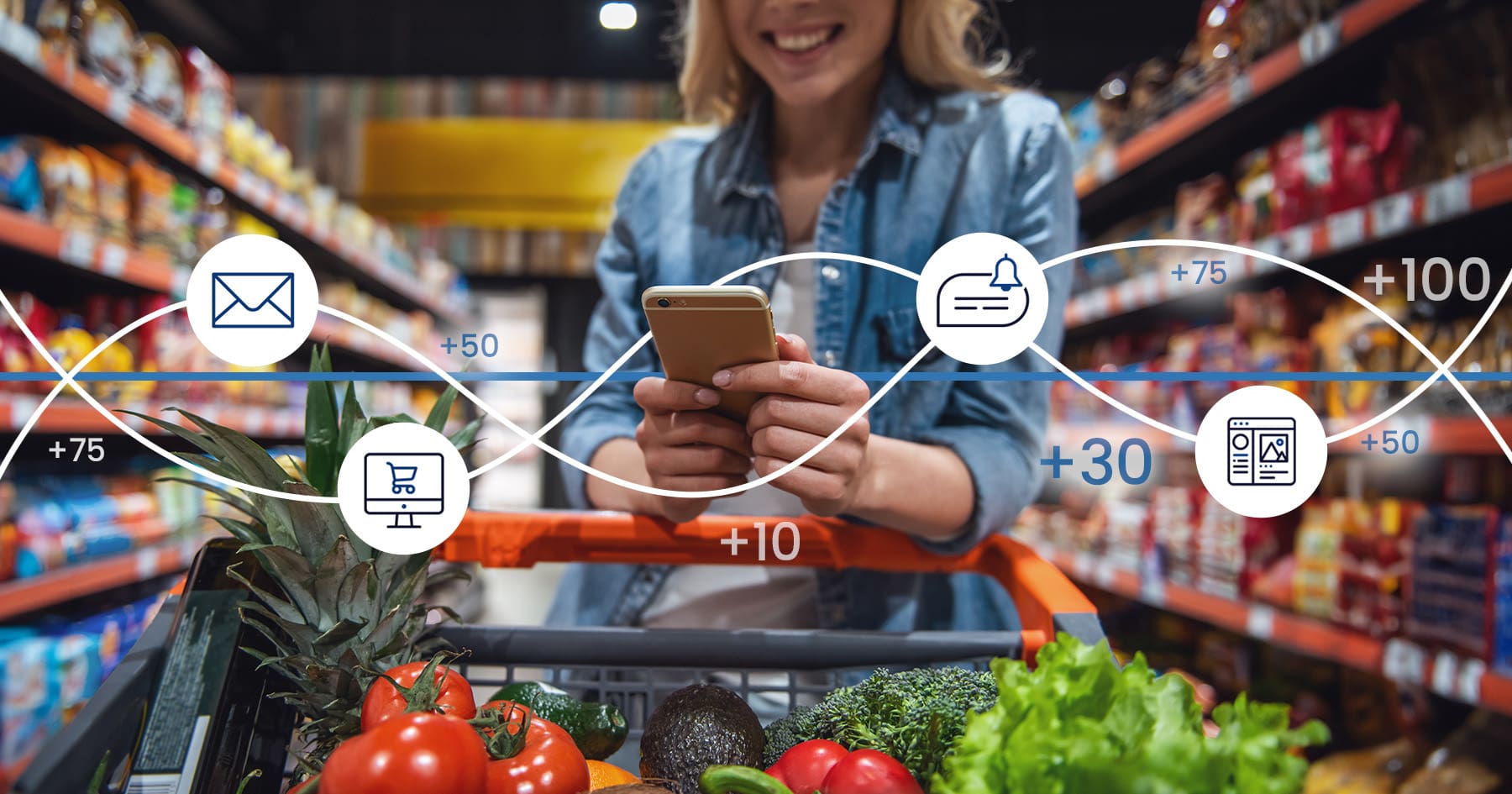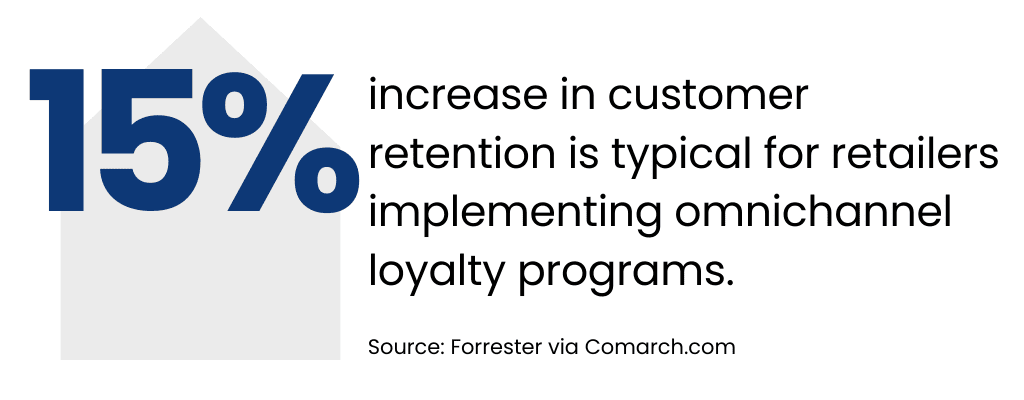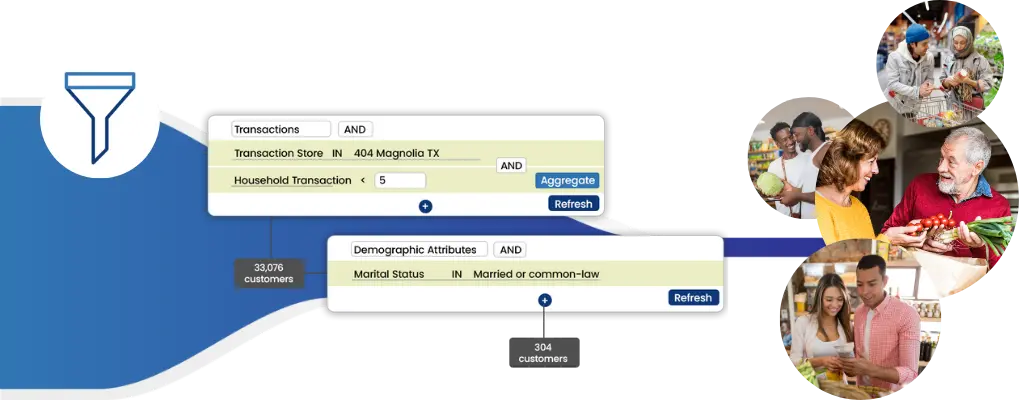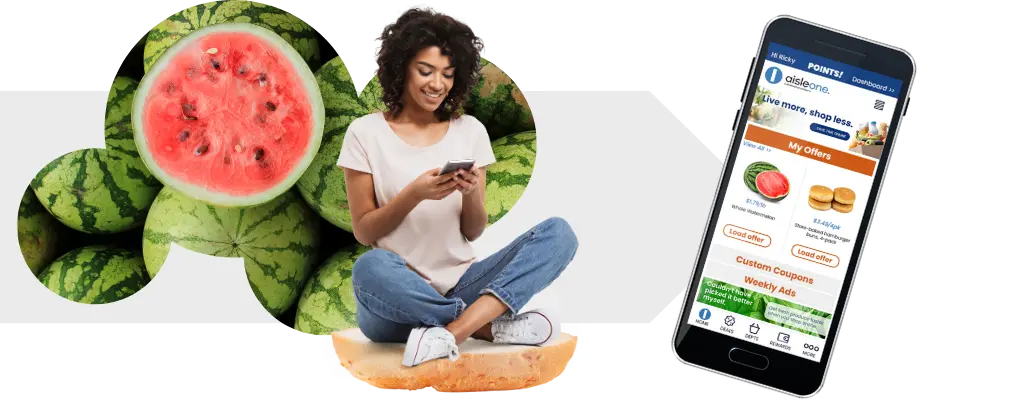
How to Implement Grocery Loyalty Programs That Actually Work
“Thank you for signing up to our traditional loyalty program. Please enjoy 5% off your next purchase.”
Offers such as this are not enough anymore.
When it comes to grocery loyalty programs, passive systems offering small discounts and impersonal messaging aren’t going to cut it.
Here’s why: Mass Retailers are too good at leveraging their advantages to match the behaviors of modern customers.
That’s how the Walmarts of the world have taken advantage of the price sensitivity created by the current economic situation to become the preferred choice for grocery shopping among American households. In addition to utilizing low prices to initially attract consumers, they’re also very good at retaining them with customer programs that resonate.
Competing to win back the market share taken by Mass Retailers represents the biggest challenge facing regional grocers and independents. However, the way in which large retailers have achieved their current standing — by capitalizing on their inherent advantages — also reveals a strategy for regional grocery stores to compete.
Grocers Need Loyal Customers to Compete with Mass Retailers
In terms of customer value propositions, regional grocers are never going to be able to compete with mass and national retailers on pricing. Yet, regional grocery stores and independents have their own distinct advantage that mass retailers can’t match: they are integral members of the local communities they serve.
This unique position provides the opportunity to foster a deeper, more personal connection with customers, something that even with fluctuating economic circumstances remains invaluable in today’s market.
Traditionally, grocers have leaned into this advantage by:
- Offering high-touch customer service that makes shoppers feel valued,
- Providing high-quality, locally sourced products (produce, dairy, meat, etc.) that supports the local economy,
- Marketing the proximity of their stores as a convenient choice for local customers, and
- Embracing their genuine connection to the community and understanding of local needs.
To leverage these strengths, grocery chains need to intensify their focus on what truly matters to their customers and extend their inherently stronger service model into the digital experience. That means taking a page from the playbook of the Mass Retailers and doubling down on their own inherent advantages: increasing personalized service, crafting unique shopping experiences, and offering customer interactions that aren’t just convenient but truly meaningful.
Technology is the key to amplifying these efforts.
By using tech to collect and analyze customer data, grocers can gain insights into individual preferences and shopping habits, enabling the creation of loyalty programs and promotions tailored for each shopper. Automated personalized messaging and customized discounts provide customers with the type of shopping experience described above, significantly enhancing the loyalty of the shopper and the overall value of the loyalty program.
This strategic approach not only allows grocers to better compete with mass retailers, but also reinforces their position as an important part of the community, further fostering loyalty and repeat business.
What Do Successful Grocery Rewards Programs Look Like?
This isn't just a theoretical approach to competing with larger retailers. Several supermarkets are finding success by deploying personalized grocery loyalty programs in this exact manner:
- Safeway Just for U: Safeway's digital-first loyalty program, Just for U, tailors exclusive deals and personalized discounts to loyal shoppers based on individual shopping habits, making offers feel personal and valuable to each customer.
- Big Y myBigY: Big Y's digital loyalty program, myBigY, enhances the shopping experience with individualized offers, tailored content, a unique rewards offering and an omni-channel engagement strategy, focusing on personalizing the customer journey at every step.
- Meijer mPerks: Like Kroger Boost, Meijer’s mPerks provides personalized offers, digital coupons and general grocery savings, but it also integrates a charitable dimension, allowing customers to support local causes through their purchases.
Despite these examples of successful programs, the majority of grocery retailers are failing to utilize their customer data to harness the power of personalization and build more meaningful relationships with their customers.
This is a lost opportunity, one that could stem the tide against a flight to price value that is behind the growing rates of cross-shopping and customer attrition across the industry.
Cross-shopping underscores the critical need for the adoption of truly effective supermarket loyalty programs.
Addressing Customer Churn with Effective Engagement and Grocery Store Loyalty Programs
In the recent eGrocery Performance Benchmarking report, from Brick Meets Click and Mercatus, the critical importance of customer retention is emphasized again and again. The report identifies how many grocery stores are facing a decline in sales despite increases in average order value. The drain on sales isn't due to customers spending less money. It's because previously active customers have begun shopping elsewhere.
This not only leads to a reduction in revenue but also increases costs for grocers as they work toward attracting new customers to offset the decline in sales. The Performance Benchmarking report estimates that approximately 2.5 to 3.5 new customers are needed to compensate for the value lost when a single long-term customer chooses to shop elsewhere.
The report goes on to attribute two specific reasons as to why grocery retailers are seeing declines in active customers:
- Technology and Personalization Gap: The failure to implement advanced technology and offer personalized shopping experiences has led to customers defecting to competitors that provide more customized services.
- Inadequate Shopper Engagement and Loyalty Programs: Retailers lacking in effective engagement strategies and compelling grocery store loyalty programs find themselves at a disadvantage, losing customers to rivals who offer greater value and acknowledgment.
The objective of any grocery store loyalty program is to consolidate purchases. But what the analysis above suggests is that basic loyalty programs — featuring the small discounts and impersonal messaging we described in the opening of this article — don’t do enough to keep modern consumers satisfied. They demand more than a static rewards program.
To compete in the same arena as the big retailers, grocers need a holistic customer engagement strategy that includes a data-driven, personalized customer loyalty strategy.
How to Implement an Effective Engagement and Grocery Store Loyalty Program
To build a grocery loyalty program that actually leads to incremental sales and takes the fight to the big retailers, grocers must begin with a foundational approach to gathering and utilizing data, managing customer relationships, and ensuring that every touchpoint with the customer is personalized and engaging.
Here's a breakdown of the five critical steps involved in creating effective engagement and loyalty programs:
1. Unify 1P Data for Insights and Engagement:
- Start by consolidating first-party (1P) data from various sources such as transaction records, loyalty programs, customer feedback, and online interactions
- This unified data pool will be instrumental in creating a more complete understanding of customer behaviors, preferences, and needs, allowing for more targeted and meaningful engagement strategies.
2. Configure Loyalty Management Systems:
- Implement a comprehensive loyalty management platform that allows for the creation, administration, and continuous optimization of your loyalty program.
- This system should enable you to tailor rewards, track member activity, and adjust program parameters based on performance and customer feedback.
3. Enhance Engagement Channels:
- Go beyond just online or in-store, and create an omnichannel loyalty program.
- That means diversifying how you communicate with your loyalty program members by optimizing multiple channels.
- Whether through email, mobile apps, social media, or in-store displays, ensure each channel delivers personalized deals and relevant content to engage customers effectively.

4. Employ Programmatic Targeting:
- Now that you've collected the data and gathered its insights, leverage these analytics through programmatic targeting techniques that deliver personalized offers and content through multiple channels from email and SMS to mobile notifications and banners in the app.
- By analyzing customer data, you can identify patterns and preferences, enabling you to reach out to customers with precision, whether it's for promoting specific products or offering personalized rewards.
- This allows you to bring greater focus to your campaigns, targeting both segments and specific shopping habits: New Customers, Lapsed Customers, Weekly Habit Building, and more.
5. Develop a Centralized Hub for CRM, Audience Building, and Analytics:
- Establish a centralized hub where data analytics, customer relationship management (CRM), and audience segmentation tools come together.
- Use the information gathered here to monitor the most important KPIs including customer retention, acquisition, and engagement.
- This workbench should provide a comprehensive view of customer interactions and program performance, facilitating informed decision-making and strategic planning for your loyalty program as it moves forward.
Following these steps will result in the type of loyalty program that leans on the inherent advantages of grocers, leading to greater revenue both online and in-store — but there remains a hurdle to implementing it.
The All-New AisleOne is the Engagement and Loyalty Solution Made for Grocers
Many grocers will look at the five steps above, completely agree with every aspect of the advice, and still fail to make the necessary steps to improve their loyalty programs.
Why?
They don't have the systems in place or the resources available to implement the strategy.
Mercatus has introduced the all-new AisleOne to bridge this gap: No extra staff needed. No manual tracking required. No additional coding or development necessary. Just a holistic and highly personalized approach to customer engagement that can be easily integrated with existing eCommerce providers or included in the Mercatus Digital Commerce suite of solutions.
How Does AisleOne Work?
Unlike the default, static rewards programs currently being used throughout the industry, AisleOne is dynamic. It leverages individual data insights and operational capabilities to create truly personal customer experiences, through:
- Customer Insights & Activation: With AisleOne Workbench, retailers bring together in-store and online customer data and then transform it into actionable insights:
- Shopper behavior analysis;
- Customer segments; and
- Predictive models.

- Targeted Offers & Promotions: Through the AisleOne Personalization Engine, every customer is made to feel as though the grocery store is designed specifically with them in mind:
- Personalized loyalty programs;
- Targeted promotions and offers; and
- Customized campaigns.
- Multi-Channel Engagement: Automated marketing campaigns ensure every customer receives the right message, at the right place, at the right time, with:
- Templated and customizable automated campaigns delivered via email, push, in-app, SMS/text and more.
The AisleOne Advantage
The key to understanding the difference that AisleOne provides is to think of it as more than just another rewards program; it's a comprehensive customer engagement solution that empowers grocers to win back the market share eroded by customer attrition.
It takes the five steps outlined in the previous section and completely streamlines the process, accomplishing what other loyalty programs are supposed to be doing — actually growing sales and contributing to a better bottom line — but even more effective and at less cost than
The proof?
Grocery chains implementing AisleOne have already achieved remarkable results, including a 14:1 ROI and a five percent sales lift on their digital engagement strategy.
Activate AisleOne Today
That's because the Mercatus version of customer loyalty is different from what other platforms provide. It's built on decades of grocery-industry experience, personalized digital engagement expertise and proprietary algorithms proven to enhance sales.
It's more than just a points-based program that promotes weekly ads, digital coupons, or exclusive discounts. AisleOne empowers retailers to engage with customers on a personal, meaningful level.

When grocers search for a customer loyalty program, what they really want is AisleOne's comprehensive and dynamic customer engagement solution. With its cost-effectiveness, ease of integration, and substantial ROI, AisleOne is the only engagement solution developed to meet the current challenges facing grocers.
To discover how AisleOne can help you win back your market share from Mass Retailers through a loyalty program that goes beyond the basics, reach out to our sales team today.
Redefine customer loyalty with AisleOne.
 Newsroom
Newsroom
